
Marking nearly 31 years as the photo-imaging industry’s business publication, last year Digital Imaging Reporter went all digital and captured an even wider audience. However, we remain true to our roots and our singular mission to engage our readers with signature features—like our coveted Rudy Awards. This year, we are proud to present the 18th Rudy Awards, in honor of our late, great cofounder.
However, the Rudy Awards are more than a chance for us to look back to our beginnings. They are also an opportunity to celebrate the amazing innovations that the photo-imaging industry continues to bring forth.
Digital Imaging Reporter was originally established in 1993 by Rudolf Maschke and Ed Wagner as Photo Industry Reporter. Rudy was an unforgettable character who pioneered photo-imaging trade publishing with his business partner. The Great Maschke, as he called himself, had a keen eye for imaging innovation and evolving trends. 
So, it is in Rudy’s name that we again applaud the gear that continues to push the photo-imaging ecosystem forward. From weekend warriors and casual everyday snapshooters to working pros, photography is now a near-constant thread in our lives. This year, as in the past, we have chosen products that are varied in both purpose and their technological prowess. And while we were restricted by space for our selections, there are many more worthy of recognition.
18th Rudy Awards Winners
Adobe Firefly Generative AI Models
Fueling the debate over the place of AI (artificial intelligence) in the imaging arena, Adobe Firefly creative generative AI models launched across Adobe’s applications. Adobe Firefly is part of a series of Adobe Sensei generative AI services. Features like neural filters in Photoshop, content aware fill in After Effects, attribution AI in Adobe Experience Platform as well as liquid mode in Acrobat enable Adobe customers to create, edit, measure, optimize and review content. 
With Firefly, everyone who creates content—regardless of experience or skill—can use their own words to generate content the way they envision it, with more speed. The content can include images, audio, vectors, videos and 3D, as well as creative ingredients like brushes, color gradients and video transformations. Firefly also permits them to quickly produce limitless variations and make changes, again and again.
The first applications that saw Firefly integration were Adobe Express, Adobe Experience Manager, Adobe Photoshop as well as Adobe Illustrator. What’s more, Firefly comprises multiple models tailored to serve customers with varying skillsets and technical backgrounds. Adobe’s first model, trained on Adobe Stock images, openly licensed content and public domain content where copyright expired. It focuses on images and text effects to generate content safe for commercial use. 
With Firefly, Adobe is aiming to leverage generative AI with solutions for working faster, smarter and with greater convenience. This will include the ability for customers to train Adobe Firefly with their own collateral. As a result, they can generate content in their personal style or brand language.
Content Authenticity Initiative
To be clear, Adobe is advocating for open standards. It founded the Content Authenticity Initiative (CAI) to create a global standard for trusted digital content attribution. Adobe is also pushing for open industry standards using CAI’s open-source tools that are free through the nonprofit Coalition for Content Provenance and Authenticity (C2PA). These goals include a universal “Do Not Train” tag in the image’s Content Credential. This allows creators to request that their content isn’t used to train models. The Content Credentials tag will remain associated with the content wherever it is used, published or stored.
Nikon Z f Full-Frame Mirrorless ILC
This honor could have gone to the Nikon Z 8, which offers the latest innovations and speed inherited from Nikon’s flagship mirrorless Z 9, albeit in a more compact body. Or to the standout Nikkor Z 135mm f/1.8 S Plena mid-telephoto portrait lens that bestows dramatic bokeh. Instead, we chose the Nikon Z f full-frame mirrorless ILC for its timeless aesthetic that wraps around Nikon’s next-gen camera technology.
What’s the “f” stand for? Fusion. It pays homage to important models in Nikon’s history, representing the fusion of past, present and future. With a classic exterior reminiscent of the FM2, the Z f links to Nikon’s heritage. Its magnesium alloy body features a glossy finish, with a classic Nikon logo and etched mechanical dials.
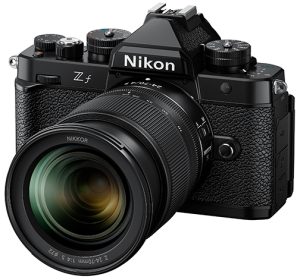
The interchangeable-lens camera employs an Expeed 7 processor that enhances response time, burst speed, as well as AF (autofocus). Moreover, it adds features to create a new category of Z full-frame mirrorless ILCs. Its 24.5MP BSI (backside-illuminated) CMOS sensor captures accurate colors and high definition with minimal noise and enhanced dynamic range, even in challenging light.
The sensor pairs with an AF system boasting 3D Tracking tech plus subject detection developed with deep learning. It locks onto nine types of subjects—people, dogs, cats, birds, cars, motorcycles, bicycles, trains and planes. It also detects the smallest size of a face in the frame—3% of the frame’s longest side. Additionally, 299 AF points in auto area AF cover 96% of the horizontal axis of the frame. But you can go fully manual, with eye/face-detection in MF mode.
What’s more, the Z f achieves 5-axis in-camera vibration reduction (VR) image stabilization equivalent to an 8-stop increase in shutter speed—the best among Z cameras. It’s also the first to support focus-point VR, which minimizes blurring at the focus point rather than the frame’s center.
More Notable Features
The camera boasts 14-fps bursts or 30 fps when set to high-speed frame capture+ mode. The Z f is also the first Nikon camera capable of pixel-shift shooting that creates 96MP images. It shifts the sensor position when capturing 4, 8, 16 or 32 RAW (NEF) files. Thus, it acquires more accurate color information and ultrahigh resolution.
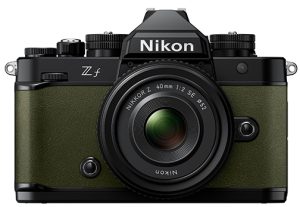
Plus, the ILC provides video frame rates and resolutions up to 4K UHD 30p oversampled from 6K. It records 4K UHD 60p (DX-mode) and 1080/120p video for up to 125 minutes. And it offers video recording in shutter-priority auto mode. Capable of in-camera, 10-bit H.265 recording, it will also record full-scale video directly to the camera without an external recorder.
Another Z first is a vari-angle, touch-sensitive, 3.2-inch LCD. It supports touch Fn for setting adjustments while framing pictures in the viewfinder. The 0.5-inch, 3.69M-dot OLED electronic viewfinder has 13-level manual brightness controls. Let’s not forget starlight view mode, which boosts display brightness to visually confirm composition in extremely dark scenes (down to -10 EV). Further, it features a switch to engage B&W photo mode; dual card slots; Wi-Fi /Bluetooth options; and USB Type C and D connectors. $1,999.95.
Think Tank FirstLight+ Backpacks
On the heels of a new tagline, with an emphasis on travel, Think Tank debuted FirstLight+ backpacks for “venturing photographers.” The series initially includes the FirstLight 35L+ and FirstLight 46L+.
The photo backpacks have pockets and accessory attachments for travel or working in the field. There’s ample space for long lenses and personal items. Additionally, they have a pocket for 16-inch laptops. A contoured torso harness is adjustable at 11 points so you can find the most comfortable fit. Additionally, the packs feature weight distribution for a comfortable load.
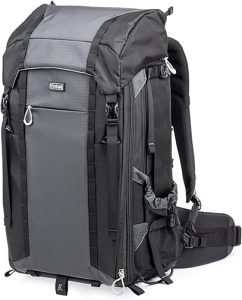
To protect gear, like telephoto lenses, there are adjustable, high-density closed-cell foam dividers. And a tripod/monopod is carried via a mounting system on the front or side. Interior mesh pockets store filters, batteries, cables as well as other small accessories. Moreover, an expandable front stuff pocket holds a light jacket, a headlamp, gloves, charger, etc. Plus, there’s a removable floating top pocket.
Other details include a large, zippered side pocket; top pockets for small items; and a top zippered pocket for quick access to essentials. Two large side pockets hold water bottles and have drains and cinch cords. Plus, grab handles on three sides help in hoisting the packs into overhead bins or vehicles. There are also side compression straps with locking SR buckles; shoulder straps; and a waist belt wrap for compact storage in overhead compartments. Rain covers complement exterior fabric with water-repellent coatings and polyurethane-coated underside fabric.
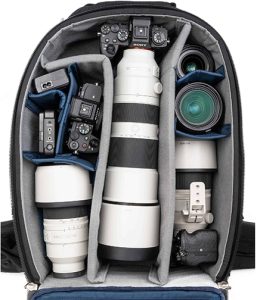
The FirstLight 35L holds a gripped DSLR, six standard zooms, a flash and detached lenses up to 500mm f/4 lens or attached up to 400mm f/2.8 ($399.75). The F46L holds two gripped DSLRs, eight standard zooms, two flashes as well as detached lenses up to 600mm f/4 or an attached up to 500mm f/4 ($425.75).
Sony Alpha 9 III
This next-gen mirrorless Sony ILC boasts the world’s first full-frame global shutter image sensor with built-in memory. The global shutter image sensor reads all pixels simultaneously. The 24.6MP full-frame sensor enables the camera to shoot at burst speeds up to 120 fps with AF/AE tracking and no rolling shutter distortion or blackout.
Further, the sensor combines with Sony’s most advanced AF system. It features AI AF with 120x AF/AE focus calculations/sec. It also gives the ILC the added ability to sync flash at all shooting speeds. The AF system has an AI processing unit that features real-time recognition AF to distinguish various subjects. All this tech means the camera can photograph moments not seen with the naked eye.
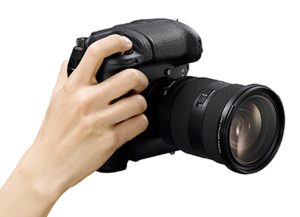
Further, the AI processing unit supports movies as well as still photography with subject form and movement recognition. Real-time recognition AF and tracking also provide a significant improvement in human eye recognition. Thus, the camera recognizes and focuses on a subject’s eyes. Plus, the system provides 8.0 stops of optical 5-axis in-body image stabilization.
Moreover, the shutter—freed from the limitations of conventional mechanical shutter sensors—is said to reach a speed of 1/80,000 second (1/16,000 during continuous shooting)! What’s more, when an optional Sony flash is attached, it’s now possible to synchronize the flash and take pictures at the top shutter speed.
Other New Benefits
The Alpha 9 III also features selectable release lag modes that let you prioritize release lag or viewfinder/monitor display. Plus, a pre-capture function enables continuously recording up to one second before the shutter is released. When selected, a continuous shooting speed boost function lets you change to a faster, preset speed set any time. And enhanced burst stamina ensures important moments are captured due to a large buffer memory and increased overall speed. Specs state the ILC captures 390 Fine JPEG images in a 30-fps burst.

Another upgrade is the latest AF algorithms achieve precision down to light levels as low as -5 EV in AF-S mode. And a composite RAW shooting function combines multiple consecutive images. Further, the ILC has a 4-axis, multi-angle LCD monitor with intuitive touch control and a touch menu. Complementing it is a 9.4M-dot electronic viewfinder with 0.90x magnification.
Furthermore, the global shutter image sensor makes this the first Alpha camera to record 4K 120p high-frame-rate video without cropping. It is also possible to shoot 4K 60p videos with 6K oversampling. And Sony’s S-Cinetone creates a cinematic look without post-processing. Moreover, the ILC includes S-Log3. When in log shooting mode, it reflects and displays your favorite imported LUT.
Workflow Functions
Sony also listened to feedback from professional photographers to give them the operability and reliability they need. The shape of the grip was improved so you can hold it in the palm of your hand to avoid straining—even with a telephoto lens. New features include a playback image filter that lets you select numerous images using high-speed continuous shooting. Plus, to support pro workflows, the function menu is usable during image playback. You can also assign the playback function menu in advance, so you can perform protection, smartphone transfer, file transfer protocol, etc., during playback.
The camera also has a dedicated microphone for voice memos. Consequently, it will transfer recorded audio data via FTP with the images. What’s more, the Alpha 9 III transfers data twice as fast as the Alpha 9 II with 5GHz communication. Additionally, there are two media slots that support CFexpress Type A cards as well as UHS-I and UHS-II SD cards. The camera’s also compatible with the professional Transfer & Tagging mobile app, which speeds up image delivery. $5,999.99.
DJI Mavic 3 Pro Drone
DJI’s flagship drone, the Mavic 3 Pro boasts a triple optical camera system for aerial storytelling. The Mavic’s Hasselblad camera and two tele cameras provide different focal lengths: 24mm, 70mm and 166mm. You can establish the environment with the wide-angle, move into a specific location with the medium tele, and then focus on a particular area or character. All three cameras support Apple ProRes 422 HQ, Apple ProRes 422 as well as Apple ProRes 422 LT. The drone also has a built-in 1TB SSD and a 10Gbps lightspeed data cable for a professional workflow.
Notably, the 4/3 CMOS Hasselblad camera shoots 12-bit RAW photos with a 12.8-stop dynamic range. Since the Hasselblad Natural Color Solution accurately restores colors, you can also avoid postproduction and complex color presets. Further, specifications include 5.1K video at 50 fps or DCI 4K at 120 fps. Plus, its 10-bit D-Log M color mode records one billion colors! And D-Log M mode reduces color grading difficulty. Moreover, Mavic 3 Pro Cine provides more creative options.

The medium tele camera (70mm) is an option for framing buildings to filming cars in commercial shoots. Its 1/1.3-inch CMOS sensor and 3x optical zoom enable 48MP/12MP photo capture and 4K/60-fps video. Additionally, it compresses the depth of field and depth of focus to highlight the subject and give a sense of depth.
The Mavic 3’s tele camera offers increased resolution, aperture (to f/3.4) as well as video frame rates. It shoots 4K/60-fps video with 7x optical zoom and 12MP photos. Hybrid zoom reaches up to 28x for discreet filming.
Intelligent Flight
Further, the drone allows 43 minutes of flight time. Peace of mind is provided by Omnidirectional Sensing and APAS 5.0. Eight wide-angle vision sensors work with a vision computing engine to sense obstacles in all directions and plan a safe route. And the DJI O3+ transmission system presents a stable camera view. It transmits a 1080p/60-fps HD live feed up to 9.3 miles.
Other features help elevate the automated flight experience. For example, waypoint flight automatically plans a route based on the user’s presets to repeat routes. With cruise control, you can set the drone to fly in any direction without continually pressing the control sticks for smoother camera movement during long-distance manual control. Finally, advanced RTH automatically determines a safe, efficient route back to the home point. The Mavic 3 Pro also features DJI’s suite of intelligent photo modes to lend a hand in helping pilots new and seasoned. $2,199. dji.com
Pentax K-3 Mark III Monochrome DSLR
Leveraging the resurgence of monochrome photography, Ricoh Imaging engineered the Pentax K-3 Mark III Monochrome digital SLR exclusively to capture high-resolution black-and-white images. The camera’s design is based on the Pentax K-3 Mark III—the flagship model of Pentax APS-C-format DSLRs. However, because it is solely for black-and-white photography, some of its features and functions differ.
It does adopt the K-3 Mark III’s advanced features in a compact, durable body. Yet, its imaging characteristics are totally optimized by adding a new, monochrome-specific 25.7-megapixel image sensor. The APS-C-format CMOS sensor is free of an AA (anti-aliasing) filter. Typical color image sensors receive light passing through red, green and blue color filters, so each pixel detects only one color-data component. To compose a monochrome image, color sensors must convert color data into monochromatic data by interpolating the color data they collect.
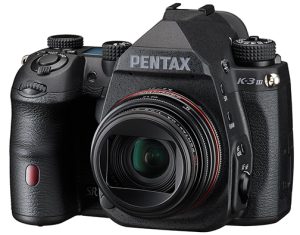
However, the new monochrome-specific sensor reflects the brightness data obtained by each pixel in the image without interpolation. As a result, it can produce extra-fine monochromatic expression in high-res images with rich gradation. Moreover, the sensor produces a natural bokeh (defocus) effect.
In addition, the DSLR features three custom image modes for black-and-white photography, to provide distinctive finishing touches. Beyond standard mode, it offers hard mode, which produces high-contrast images. Soft mode creates high-key, low-contrast images. Plus, each mode allows minute adjustment of tone, key, contrast and sharpness for further personalization.
What’s more, the camera’s exterior was customized to reflect its monochrome capabilities. Design features include white backlight illumination on the LCD data panel; “Monochrome” lettering on the back panel; a menu screen with a black-and-white visual default scheme; and icons printed on buttons and switches across the exterior finished in three shades of gray. $2,199.95.
Canon PowerShot V10 Vlog Camera
Video content continues to absorb our attention! Answering the call, Canon’s PowerShot V10 vlog camera is the first in the PowerShot V (Video Communication) series for consumer video production, livestreaming and vlogging. And it doubles as a travel camera!
For those looking to step up from a smartphone, the integrated-lens, point-and-shoot camera has an intuitive user interface on its touchscreen and frame AF mode for product reviews. The 2-inch LCD enables touch shutter and menu selections. It also operates in horizontal and vertical orientations.

The camera is compact at 2.5×3.5×1.4 inches and 7.4 ounces. Moreover, it includes a handy built-in stand and a tripod port. Notably, you can connect it to a Wi-Fi router and output video directly to YouTube or Facebook via the Camera Connect app. Additionally, its 1-inch, 15.2MP CMOS sensor shoots stills and 4K UHD 30p and Full HD 60p video—achieving low noise even in low light.
Further, the 19mm-equivalent wide-angle lens is ideal for selfies. Its angle is wide enough so you don’t have to outstretch your arm completely. And since sound is also crucial when vlogging, Canon included two large stereo microphones. A third mic helps cancel out unwanted sounds.
The camera offers familiar smartphone handling with a vertical grip and one-handed operation. Using its built-in stand, you can lean the camera with 30º of angle for table/countertop recording. You can even hold it by the handle upside down and it reorients the video.
A fully functional still camera, the V10 provides auto photo mode; face detection; tap-based subjection selection; image stabilization; face-tracking AF; 14 color filters; and an automatic ND filter that darken video without affecting colors. Another plus is horizontal webcam capability (UVC/UAC) with built-in USB Video Class support. $429.99.
Fujifilm Instax Square SQ40 Instant Camera
Analog photography continues to grow in popularity, and camera makers are weaving high tech into their analog models. Case in point: the Fujifilm Instax Square SQ40 analog instant camera offers a new automatic exposure function. It automatically senses the level of ambient light when the shutter button is pressed. Subsequently, it optimizes the shutter speed and flash output according to the scene. In addition, it enables even novice Instax instant camera users to take photos that are automatically adjusted regardless of interior or exterior conditions.
In addition, to make taking selfies and close-ups easy, Fujifilm added a neat selfie mode function. You can activate selfie mode by twisting the lens after powering on the SQ40. Just rotate the lens to switch to selfie mode; flip the camera to frame yourself in the selfie mirror; and selfie away! Of course, the SQ40 has a built-in selfie mirror up front.
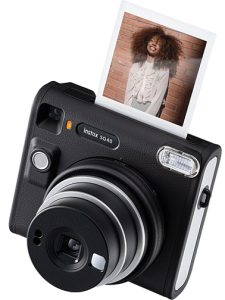
The analog camera also features a Fujinon 65.75mm f/12.6 lens, which offers intuitive zone focus control, with a minimum focusing distance of 11.8 inches. Along with an optical viewfinder for accurately composing images, there is a built-in flash to illuminate scenes in low-light environments.
The retro-inspired camera sports a square silhouette, a textured, classic black finish as well as the timeless feel of analog photography. The Fujifilm Instax Square SQ40 instant camera uses Instax Square instant film, which develops in about 90 seconds and comes in a wide variety of types. The camera produces photos with a 2.4×2.4-inch image area and a 3.4×2.8-inch overall print size. $149.95.
Sigma 100–400mm f/5–6.3 DG DN OS | C
In 2023, the Sigma 100–400mm f/5–6.3 DG DN OS | C telephoto zoom launched for Fujifilm’s X-mount system. It joined its siblings in the Sony E and Leica L mounts and expanded the Sigma Contemporary lineup of X-mount lenses to six.
The “Handy Tele Master” ultra-telephoto zoom was created in 2020; the DG DN version is for full-frame mirrorless cameras. However, photographers can use the lens with an APS-C-format body.
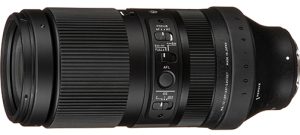
Moreover, the 150–600mm-equivalent lens uses a new control algorithm to optimize the AF drive and communication speed for X-mount interchangeable lenses. Plus, it offers high-speed autofocus and supports AF-C (continuous AF) as well as in-camera aberration correction. Additionally, its switches were optimized for the X mount. The AF function setting switch lets you select a function while the AF function button is pressed.
Further, with 16-group, 22-element construction, one FLD (fluorite-equivalent) and four SLDs (special-low dispersion) elements correct aberrations and distortions. Thus, it achieves high-resolution to the edges of the frame throughout its range. And Super Multilayer coatings combat flare/ghosting. In addition to high-speed AF achieved by a stepping motor, the lens offers five steps of optical image stabilization. When combined with a camera employing in-body IS, the lens corrects for pitch and yaw axis rotations.
The zoom lens also has an AF function setting switch to choose AF lock/AF activation and a focus limiter switch. Plus, a zoom lock switch fixes the zoom ring at the widest end, preventing the barrel from extend during transportation. Moreover, an OS switch lets you switch between mode 1 for general photography and mode 2 for motorsports and panning. The inner-focus lens features a dual-action zoom that supports straight zoom and ring zoom. Thus, you can zoom in and out by adjusting the hood for quick view angle adjustments. $949.
OM Tough TG-7 Outdoor P&S
OM System’s Tough TG-7 point-and-shoot compact camera represents a still vibrant category in the P&S arena—outdoor, adventureproof cameras. The rugged camera features dustproof and shockproof capabilities along with dedicated underwater shooting modes.
The P&S is shockproof enough to endure 6.9-foot falls as well as resist forces up to 220 pounds. And it is waterproof to depths of 49 feet. Moreover, it remains functional in freezing temperatures down to 14°F. Additionally, you can use the camera with the optional PT-059 underwater housing for shooting at depths of 148 feet. Its sealed construction throughout is complemented by a dual-lock mechanism on crucial openings, like the battery cover, to guarantee waterproof performance and safeguard the camera from sand and dust. It also boasts a protective glass on the front lens for antifogging and a nonslip grip.
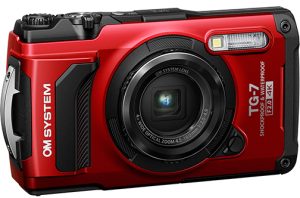
The Tough compact’s field sensor system automatically acquires location (latitude/longitude) and environmental data. This data includes temperature, water temperature, altitude (water depth) and shooting direction tracking data. You can load this information into the OM Image Share app to link and display your traveled route along with the water depth in recorded images.
Beyond its Tough features, the TG-7 boasts a 12.7MP, back-lit CMOS sensor and an 4x optical zoom, 25–100mm-equivalent f/2.0 lens. The f/2.0 aperture allows for fast shutter speeds and reduced subject blur. Plus, the camera provides in-camera RAW processing and 4K UHD video recording. And its variable macro system offers 0.4-inch close-up capabilities. The system comprises microscope mode, microscope control mode, focus-stacking mode and focus-bracketing mode. Microscope control mode lets you switch between 1x, 2x and 4x magnifications. Additionally, the 3-inch, 1.04M-dot LCD monitor allows for 44x subject magnification.
Underwater Features
The camera’s five underwater shooting modes optimize settings for various scenes: underwater wide, underwater snapshot, underwater macro, underwater microscope as well as underwater HDR. Additionally, underwater shallow, underwater midrange and underwater deep white balance modes automatically make adjustments based on the shooting mode.
Notably, the camera supports vertical video. As a result, these files are easier to post on social media without editing software. Another beneficial feature is pro capture mode. It begins recording 0.5 second before the full shutter press and continues sequential shooting at 10 fps. It’s aimed at capturing shots that are difficult to time, such as flying birds. Further, the camera has a USB Type-C terminal to charge the battery inside the camera body; Bluetooth Low Energy communication; and Wi-Fi connectivity. $549.99.
Panasonic Lumix G9II
With a new sensor, the Lumix G9II is the first camera in the Micro Four Thirds (MFT) Lumix G series to feature Phase Detection Autofocus (PDAF) technology. The Panasonic camera also supports photographers from various fields with compact, lightweight Lumix G MFT lenses. The ILC boasts a 25.2MP Live MOS sensor and new engine to produce high-res images with rich color. Its hybrid (779-point) PDAF tech also enables accurate autofocus and high-speed tracking of fast-moving subjects.
Moreover, it achieves impressive burst shooting at 60 fps in AFC. It also has continuous shooting rates of 75 fps when using the electronic shutter or 14 fps with the mechanical shutter. Further, Panasonic improved its image stabilization system. It now combines 8-stop BIS (body image stabilizer), 7.5-stop 5-axis Dual IS 2 tech, as well as advanced Active IS for enhanced video stabilization.

What’s more, the sensor enables 13+ stop V-Log/V-Gamut, Dynamic Range Boost. The camera also uses AI-powered recognition technology developed using deep learning for real-time autofocus recognition. Consequently, it now recognizes cars, motorcycles and animal eyes.
Panasonic included a Real-Time LUT function that permits personalized color expression via LUT files. And an enhanced monochrome mode features Leica monochrome for deep black–white contrasts. Add to this a handheld 100-megapixel high-resolution mode and live view composite mode to expand photographic options. For multimedia creators, the G9II offers 4:2:0 10-bit 5.8K (4:3) full sensor recording/5.7K (17:9). It also provides 4:2:0 10-bit C4K/4K 120p/100p to create slow motion videos. Furthermore, the camera supports Apple ProRes video.
Additional features include a 3.7M-dot, 0.8x-magnification OLED live viewfinder; a 3-inch, 1.8M-dot, free-angle touchscreen monitor; dual UHS-II SD slots; weather sealing; as well as Wi-Fi and Bluetooth connectivity, along with a USB Type-C port and an HDMI Type-A port. $1,899.99.
Tamron 70–180mm f/2.8 Di III VC VXD G2
This is a compact, lightweight, fast-aperture telephoto zoom for E-mount full-frame mirrorless cameras. Leading the list of G2 improvements is Tamron’s VC (vibration compensation) mechanism. Even with it, the lens is portable. It has a maximum diameter of φ83mm, measures 6.2 inches at the 70mm focal length and weighs 30.2 ounces.
Its optical design was revamped to achieve image quality across the zoom range. Tamron also shortened the minimum object distance at the wide end to 11.8 inches compared to its predecessor’s 33.5-inch MOD, with a 1:2.6 maximum magnification ratio.
Additionally, Tamron’s VXD (voice-coil eXtreme-torque drive) linear motor focus mechanism provides high-speed, precision autofocusing for stills and video. And its improved optical design features an effective arrangement of special lens elements. They include one XLD (eXtra low dispersion); one hybrid aspherical; three LD; as well as two GM (glass molded aspherical) elements. They work to control chromatic aberration and artifacts as well as deliver high resolution throughout the zoom range. BBAR-G2 coating also suppresses ghosting and flare to help ensure details are captured even with backlight. Moreover, the lens boasts soft bokeh that’s a hallmark of an f/2.8 aperture.
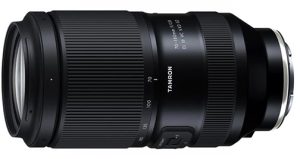
Further, tracking performance when following fast-moving subjects received a boost via the VXD linear motor focus mechanism. It also suppresses vibrations and noise during AF more effectively, making it ideal for both photos and video. Moreover, at focal lengths up to 100mm, AI provides compensation with videography in mind.
Plus, the VC mechanism suppresses shake that occurs when shooting at the telephoto end, panning or close focusing. Thus, it enables more stable handheld shooting, allowing tripod-free shooting—even in low light. Other features include improved scratch resistance; moisture-resistance; a front fluorine coating; as well as support for camera-specific functions. $1,299.
Polaroid I-2 High-End Instant Camera
The Polaroid I-2 high-end instant photography camera combines a traditional analog experience with modern technology. Moreover, pushing the instant camera category, it’s armed with the sharpest-ever Polaroid lens and built-in manual controls.
Foremost is the Polaroid I-2’s continuous autofocus (AF) three-lens system. The system takes the sharpest shots of any Polaroid instant camera for integral film. Moreover, it features a wide aperture to deliver depth of field. Further, the lens is capable of an f/8 aperture across a 1.3-foot ~ ∞ range, controlled via a stepping motor.
Additionally, the AF system leverages the lens with a LiDAR (light detection and ranging) sensor. The sensor detects the distance to the subject and auto-adjusts the lens for accurate focus. LiDAR also enables longer focusing distance and is more reliable in scenes with bright or low light.
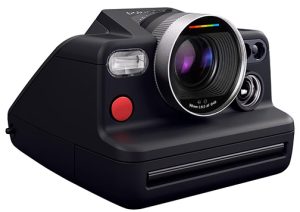
Not your father’s instant camera, this is the first Polaroid camera for integral film with built-in manual controls. A large, bright viewfinder offers a traditional optical experience and communicates camera settings via its display. Camera mode, flash mode, distance to the object, shutter speed, aperture as well as the light meter indicator value are selectable and seen through the viewfinder display and external OLED display.
Six shooting modes are also selectable. They are auto, aperture priority, shutter priority, manual, self-timer, and multi-exposure modes. Plus, a vacuum discharge tube strobe flash has an 8-foot range. Further extending photographers’ creative choices, the Polaroid I-2 is touted as the first instant camera compatible with i-Type, 600 and SX-70 film. It also has a built-in 49mm lens thread mount and a standard 1/4-20 UNC tripod mount.
The Polaroid I-2 is powered by an internal rechargeable lithium-ion battery. The battery is rechargeable via a USB-C connection and has a 15-pack battery life. $599.
GoPro Hero12 Black
Of course, we had to include GoPro’s flagship action camera. With GoPro portability, the Hero12 Black offers an enhanced feature set. It enables up to 2x longer runtimes thanks to a redesigned power management system. It also delivers 70 minutes of continuous recording at 5.3K/60p; 95 minutes at 5.3K/30p; and 155 minutes at 1080p/30. All with HyperSmooth 6.0 video stabilization. Plus, it offers high dynamic range (HDR) video in 5.3K and 4K resolution.
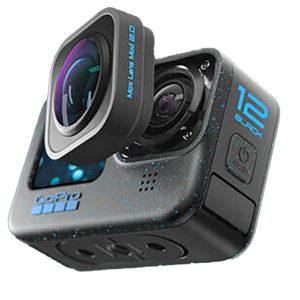
Adding to its capabilities is the Max Lens Mod 2.0 accessory. It enables a wide 177° field of view at 4K 60 fps. Moreover, the Max Lens Mod 2.0 captures video and photos in three field-of-view settings. As a result, it fully leverages the Hero12 Black’s extra-large 8:7 sensor to enable perspectives that are 36% wider when capturing widescreen video and 48% taller when capturing vertical video (compared to the Hero12’s standard lens).
The Hero12 Black features new, pro-minded capabilities that also benefit casual users. For instance, there’s wireless audio support for Apple AirPods and other Bluetooth audio devices like earbuds, headphones and microphones. This makes the camera a solution for vlogging and scene narration. It’s also an option for issuing voice commands to control the camera from a distance.
Additionally, you can slow down video to 8x slo-mo in 2.7K. Or grab 24.7MP frame grabs as well as 27MP photos. Also new is GP-Log with available LUTs for more control and color grading in postproduction. Plus, the new vertical capture mode captures vertical 9:16 aspect ratio 4K video while the camera’s mounted horizontally. Thus, you can share straight to vertically oriented social channels.
Further, more casual users looking for a blend of convenience and control will appreciate the updated user interface. There are now updated “easy controls” for maximum convenience as well as streamlined “pro controls” for advanced users wanting maximum control.
Additional New Features
Plus, wireless timecode sync works with an unlimited number of Hero12 Black cameras for easier multi-camera editing with Final Cut Pro, Adobe Premier and other editing apps. Further, optimized encoding delivers smaller file sizes with no compromise to image quality. 
The new camera offers video stabilization with 360° horizon lock. That’s because HyperSmooth 6.0 features next-gen AutoBoost that automatically boosts video stabilization as needed. It does so while maintaining the smallest cropping margin possible with smooth transitions between crop levels. HyperSmooth 6.0 also enables horizon-leveling, even with 360° camera rotation in the Linear + Horizon Lock digital lens.
Furthermore, Interval Photo joins a suite of GoPro Power Tools that help you capture video and photos in unique ways. Interval Photo enables capture at fixed intervals, from every 0.5 second all the way up to every 120 seconds. Finally, the Hero12 Black’s mounting fingers now feature 1/4-20″ mounting threads, making it compatible with standard camera mounts and accessories. Of course, the camera is still “GoPro tough.” It’s waterproof to 33 feet with no housing required. $399.99.


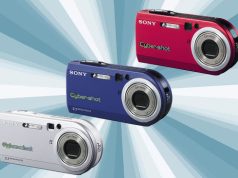
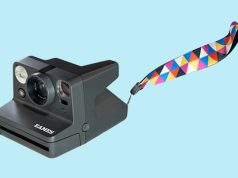


[…] Digital Imaging Reporter’s 18th Rudy Awards […]